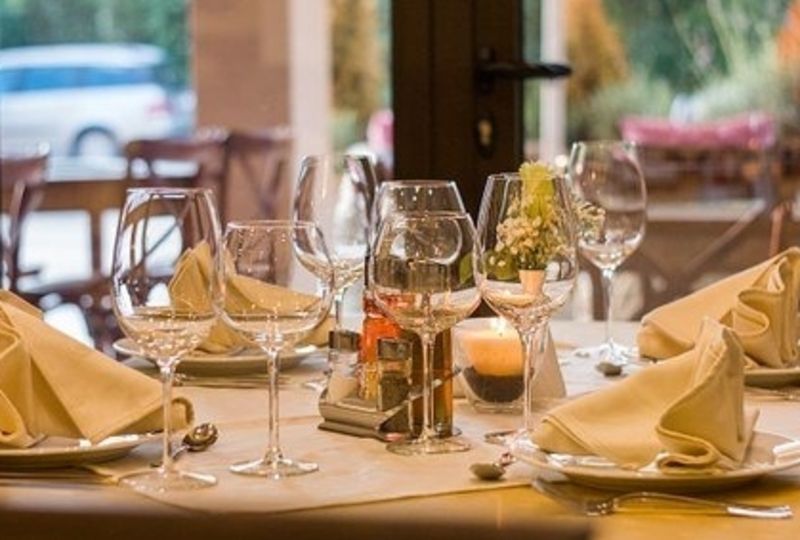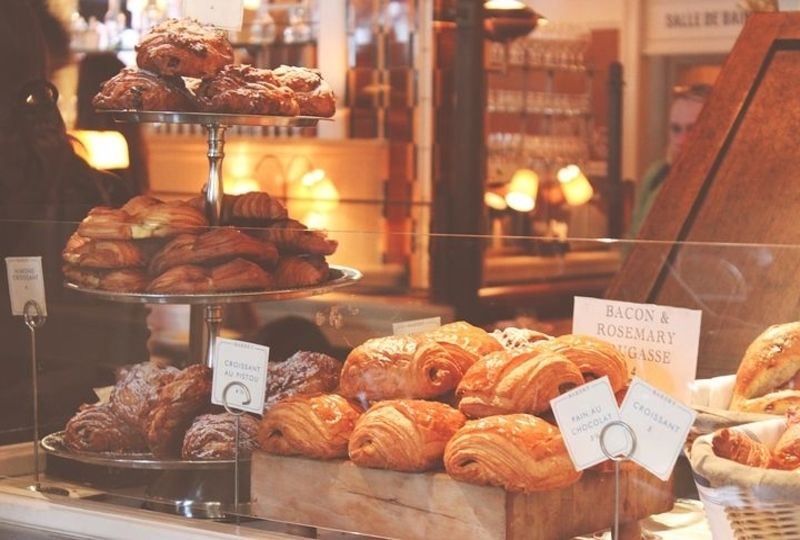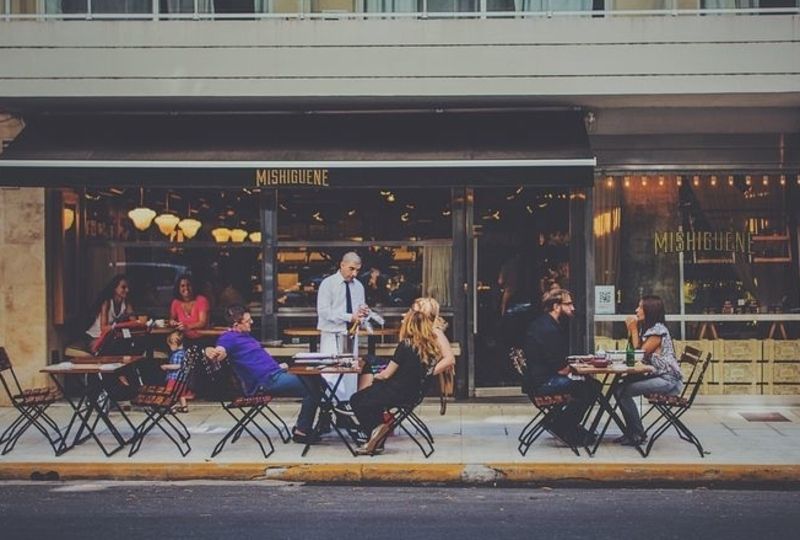What You Need to Know About Dining in Germany

Something you are bound to do when you visit Germany or another German speaking country is to go out to eat. Dining in Germany is similar to dining anywhere else in Europe, though it is not identical.
In France and Italy, people tend to make the dining experience long and enjoyable. In Germany, dining out is more functional - you aren't likely to spend a couple of hours simply chatting at a table.
German food is incredibly hearty, with many of the dishes having a lot of meat that could be considered comfort food. However, they have a wide range of restaurants, from fast food to fancy dining.
When you go out to a restaurant, you need to know more than how to agree and a bit more than a basic German vocabulary.
Here's what you need to know to get the most out of your German dining experience.

What You Need to Know about Ordering
Once you have travelled to the restaurant, cafe, or festival, it's time to figure out how to place your order. Before you order from a menu, take a bit of time to check out the menu. You can even get started now by seeing what traditional German dishes may give you the best idea of what real German cuisine is.
What you find at a fair or festival is different from the food you get at a restaurant, but many of these tips still apply - it's just a little less formal than in a restaurant.
Take a Seat
The sit-down restaurant experience in German speaking countries is a good bit different from North America, starting with when you arrive. If you don't see a sign telling you to wait, you are expected to find your own seat at a table. Typically, it's only the high-end restaurants that seat their patrons.
If you are planning on using a card to pay for your meal, make sure that the restaurant accepts bank or credit cards. Many German-speaking nations simply don't accept cards (neither bank nor credit) for meals. On the one hand, this is incredibly inconvenient because it means carrying cash and having to make sure that you stay within that cash amount as you order. On the other hand, it does reduce the likelihood that your financial information will be stolen.
You can always call ahead too, that way you can ensure that you not only know how you will pay before you get to the restaurant, you are more likely to have someone who understands your question about payment. Just like everywhere else in the world, restaurants that serve cultural dishes (such as Chinese, Thai, Indian, or Mexican) have staff that aren't native German speakers. There are great odds those same staff members don't speak English either. If you call ahead first, the person answering the phone will definitely speak German, so they should understand when you ask about paying with a plastic card.
Water Isn't Automatic
Most restaurants in the US and Canada automatically bring water to the table. This is not common in most of Europe. If you would like water with your meal, you will need to ask for it.
The automatic assumption is that you will want sparkling water. If you are hoping for just a typical glass of tap water, you will need to specify this when you ask for water.
It is not advisable to ask for tap water though. You will likely get a confused look or see something like disgust cross over your server's face because tap water is considered good for washing, but not for ingesting in Europe.
Refills Aren't Free ...
Most places in North America offer free refills for most types of beverages. If you have soda, coffee, or tea, you can pretty much drink as much as you want. This is not the case in German speaking countries - or in Europe as a whole. It's one of the things that Europeans often cite as being one of the things they love most about visiting the US - free refills.
Keep this in mind as you eat because you will need to pace how much you drink. Don't drink half of your beverage before the food even arrives - you're going to need that drink for the meal.
... Nor Is Your Bread
If a place provides bread at the beginning of the meal, it almost certainly isn't free. Technically, it isn't free in North America either. You only get bread when you order food, so the bread is included in the price of the meal, like a default appetizer.
Keep this in mind the next time you go out to eat in North America. You may get free refills of bread (you won't get this in Germany without additional cost), but you may not. Either way, the cost of the bread is included with your meal.

Most Meals Are A La Carte
This actually isn't too different from the US and Canada, you just may have more options. Meals don't typically come with a set round of side dishes with a meal, except for fast food. When you dine out, you are more likely to need to pay attention to what sides you want with a main dish.
When you start ordering your food, you can order bread, but you will see how much it costs, and that tends to make people in North America less interested in indulging in eating bread before their food arrives.
The Bill and the Tip
Probably the most unfamiliar aspect of paying for your meal is the fact that the bill doesn't appear as soon as you finish eating. You actually have to ask for the check once you finish.
You don't get up to pay the bill. Once your server brings it, you give them your method of payment, and they will take it with them to cash out the meal.
Tipping is similar in German speaking countries, so if you get good service, provide the typical 15% tip. Don't simply round up, but take the time to pay your server. Like in the US, German wait staff rely on tips as a large part of their wage. If they meet your expectation, give them 15%; if they exceed your expectation, tip them more than the standard amount.
For bad service, you can tip at a lower rate or not at all. However, you need to make sure that you are a good patron so that you know that they aren't reacting to unintentional offensive behavior on your part.
Minding Your Dining Manners
German table manners aren't quite the same as those in North American or other European nations. The manners are not significantly different - just enough that you may not notice how to act if you don't already know.
Keep in mind, most of these tips are for when you are dining out, not just grabbing some fast food or eating at a festival or having a meal outside. It is safe to apply these tips any time you eat inside a restaurant or at home.
- Don't eat before everyone else is seated and has their own food. Once everyone is set to eat, say "Guten Appetit!" before you pick up your utensils.
- Place your napkin in your lap before you start eating.
- Knives are held in the right hand, and forks in the left, and you hold onto them through the entire meal. The exception is if you are taking a drink or eating bread.
- Cut one bite sized piece of food at a time, not the entire main course (typically meats) all at one time.
- When you finish eating, place the knife and fork next to each other pointing toward the plate's center.
- Most meals require the use of utensils, not your fingers. Typically, if you are eating inside or at a restaurant, use your utensils.
- Finish everything you are served. German speaking nations tend to have more traditional serving sizes, so it isn't likely this will be a problem.
Keep in mind this is not a comprehensive guide to having good manners - it's enough to keep you from offending people when you are dining out.
Know Your Food and Drink Options
All of the food and drink that you love are available in German speaking countries, but you're going to get them with a German twist. Most of these dishes are going to have their own unique flavor, but you can still find most of your favorite food and beverages when you dine out.
Food Vocabulary
| Appel | der Apfe |
| Banana | die Banane |
| Beans | die Bohnen |
| Beef | das Rindfleisch |
| Beer | das Bier |
| Bratwurst (not a hotdog) | Bratwurst |
| Breakfast | das Frühstück |
| Cabbage | der Kohl / das Kraut |
| Carrot | die Karotte / die Möhre |
| Chicken | das Hähnchen |
| Dessert | Nachtisch |
| Fish | der Fisch |
| Food | das Essen |
| Fruit | Das Obst |
| Grapes | die Trauben |
| Lamb | das Lamm |
| Meat | Das Fleisch |
| Mushroom | der Pilz / der Champignon |
| Orange | die Orange |
| Peas | die Erbsen |
| Pork | das Schweinefleisch |
| Potato | die Kartoffel |
| Strawberries | die Erdbeeren |
| Turkey | die Pute |
| Vegetables | Das Gemüse |
Drinks
| Apple Juice | der Apfelsaft |
| Beverage | Das Getränk |
| Coca-Cola | das Cola |
| Coffee | Der Kaffee |
| Herbal liqueur | Kräuterlikör |
| Lemonade | die Limo |
| Milk | die Milch |
| Sparkling mineral water | Mineralwasser |
| Tap water | Stilles Wasser |
| Tea | der Tee |
| Water | das Wasser |
| Wine | der Wein |
Meal and Food Object Terms
| Utensils | die Utensilien |
| Check | die Rechnung |
| Dinner | das Abendessen |
| Eating outside – informal eating | Grillparty |
| Lunch | das Mittagessen |
| Main course | das Hauptgericht |
| Menu | die Speisekarte |
| Napkin | Die Serviette |
| Set meal (Like the North American meal at a fast-food place, where ordering a meal means a set of certain items from the menu.) | das Menü |
| Starter | die Vorspeise |
| Tip | das Trinkgeld |
| Vegetarian | vegetarisch |

Dining Phrases
Armed with all of these tips and German vocabulary for food and drinks, it's time to learn the phrases you will need when you dine out in Germany.
The following table does have phrases that are more specific to some types of restaurants than others. It's still important to know all of them because odds are that you will eat at restaurants, fast food places, and outside (such as at festivals) while you are visiting. These phrases will help you know what to say no matter what kind of dining you are enjoying.
Phases You'll Probably Use
| Another, please. | Noch eins, bitte. |
| Can we have more water, please? | Können wir mehr Wasser haben, bitte? |
| Can you please pass me the salt? | Kannst du mir das Salz geben, bitte? |
| Check please! | Zahlen bitte! |
| Cheers! | Prost! |
| Could I have a cup of coffee? | Könnte ich eine Tasse Kaffee haben? |
| Did you enjoy your meal/ Did it taste good? | Hat es Ihnen geschmeckt? |
| Do you have vegetarian dishes? | Haben Sie vegetarische Gerichte? |
| Enjoy your meal! Or more accurately, it matches the French Bon appetit! | Guten Appetit! |
| Excuse me please, waiter. | Entschuldigen Sie bitte, Ober. |
| Excuse me. | Entschuldigung. |
| I would like something to drink. | Ich möchte gerne etwas trinken. |
| I would like to order now. | Ich möchte jetzt bestellen. |
| I would like to pay. | Ich möchte bezahlen. |
| I would like to reserve a table at 5 p.m. | Ich möchte einen Tisch um 17 Uhr reservieren. |
| I’d like to pay. | Ich möchte zahlen. |
| Is it good? | Schmeckt es dir? |
| Is the dish gluten free/free from nuts? | Ist das Gericht glutenfrei/nussfrei? |
| Is there a vegan option? | Gibt es etwas Veganes? |
| Is this seat taken? | Ist dieser Platz frei? |
| May I see the menu, please? | Darf ich bitte die Karte sehen? |
| Mealtime! (Used more as a greeting, similar to hello, but specific to lunch time or diner.) | Mahlzeit! |
| Shish kebab-like dish | Döner Kabap |
| Table for two, please. | Einen Tisch für zwei, bitte. |
| Take away, please. | Zum mitnehmen, bitte. |
| To your health! | Zum Whol! |
| What do you recommend? | Was können Sie empfehlen? |
| What types of beer do you have? | Was für Bier haben Sie? |
| Would you like an appetizer? | Möchten Sie eine Vorspeise? |
| Would you like it spicy? | Mit scharf? (Informal German unusual heard in fast food places) |
| Would you like anything else? | Sonst noch etwas? |

Have a Great Dining Experience
Dining in German-speaking nations can be incredibly enjoyable. While there are some differences, much of the experience will be similar to dining in North America. Do make sure to prepare so you know what is different so you can keep from being surprised by those few, but very significant, differences.
Don't forget to learn how to start a conversation in German to get the most out of your dining experience. Nothing pairs with good food quite like a great conversation.
